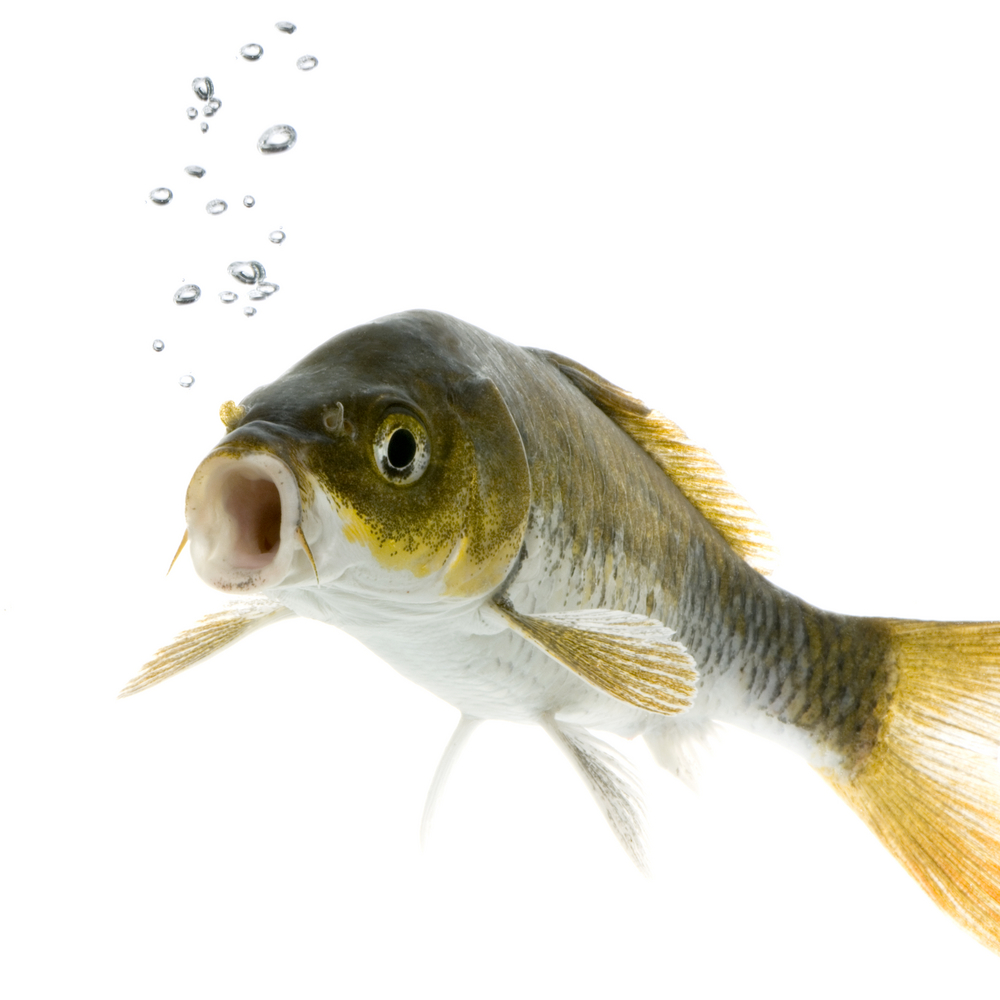Table of Contents (click to expand)
Fish are able to breathe underwater because of various adaptations to the water’s salt content and osmotic pressure, as well as the physical evolution of gills; in other liquids, these factors (among others) would not be the same and would therefore not be conducive to survival.
On those lazy afternoons staring numbly into your fish tank, wondering what mysteries are bouncing around in your aquatic pals’ heads, you may have occasionally longed for such a free-floating lifestyle. Fish are incredible creatures, able to survive underwater with the the help of many specialized adaptations. Those of you with a rudimentary understanding of fish know that they possess gills, like so many other marine creatures, which allow them to extract oxygen from the water in order to breathe.

This enviable position of fish may cause one to think… what would happen if I placed a fish in a different kind of liquid? Would it survive?
Before you launch into an at-home science experiment with your precious finned friends, you should know a few things about fish, water, gills and the delicate balance that allows fish to thrive in different parts of the world.
How Do Fish Breathe Underwater?
As you likely know, the water on our planet has a high level of dissolved oxygen within it; for those who don’t know, dissolved oxygen is the concentration of non-compound, free oxygen in a liquid. In water, these unattached oxygen molecules (O2) are not counted among the oxygen molecules bonded to hydrogen (H2O). This dissolved oxygen is therefore available to be used, if it can be separated from the H2O!

To overcome this issue and utilize the oxygen found in water, fish developed gills—feathery organs that are covered in blood vessels. When fish open their mouths and take in water, they then force that water back over their gills, where the dissolved oxygen is filtered and taken in through the thin blood vessel walls. This is how fish are able to respirate, as is the case for many different forms of marine life. This dissolved oxygen in the water is produced as a byproduct of photosynthesis from aquatic plants (e.g., algae and seaweed), but it also enters the water by slowly diffusing across the surface of the water from the air.
This sounds like a simple enough process, but it is also highly contingent on variables in the water, such as the salinity, which is why salt water fish cannot survive in fresh water, and vice versa. You can read about this in more detail in this article.
There are other factors that also must be considered, such as the density of the water , other solute concentrations, other dissolved gases and the pH balance of the water. There are more than 30,000 different species of fish that have been identified thus far, each of which is specially adapted to their respective ecosystems. The waters in these particular areas are optimal for their survival, a large part of which depends on their ability to breathe clean oxygen, avoid pollutants, and function normally in the liquid.
Also Read: Why Can’t Freshwater Fish Survive In Salt Water?
Fish Breathing In Other Liquids
While the most important aspect of breathing underwater is the oxygen content, this is not the only consideration. In some liquids, such as tea, a fish might find very similar levels of oxygen, as tea is largely composed of water. However, the other substances in the water—even on a molecular levels—would be foreign to the body of the fish, and the concentrations would be different than what their body was adapted to handle.
In a substance like Coca-Cola or orange juice, the solute concentrations would be extremely different than in water, and there would likely be less dissolved oxygen in these liquids, essentially suffocating the fish.
Fish are able to control their osmotic balance very well, but if they are suddenly put in an environment where the solute concentration is dramatically higher or lower than their typical ecosystem, their cells will either take in too much water, swelling to the point of bursting, or they will completely empty out, similarly leading to cell death. Furthermore, the pH of these liquids is significantly different from water, which would also be fatal.

In the case of milk, a popular suggestion for such a question, the water level is also quite high, but there would not be as much available dissolved oxygen, as there are many other molecules in milk—fat, protein, etc.—that would make it difficult to breathe.
Depending on the liquid, fish may be able to survive for varying amounts of time, and may even behave normally when returned to their water-filled tank. However, other liquids will quickly kill a fish as the result of suffocation or other unpleasant ends. There has been a dearth of formal research on this subject, but anecdotal evidence from at-home experiments and clear common knowledge about the needs for fish respiration suggest that the vast majority of fish would be unable to survive in liquids other than water for an extended period of time. Unless the liquid was tested, perfectly balanced and carefully manipulated to replicate pond, lake, stream, ocean or river water, it would have negative health effects on your fin-flapping companion.
Also Read: Do Fish Get Thirsty?
A Final Word
We have made some suggestions in this article about different liquids in which a fish could potentially survive for a limited time. However, we in no way condone this type of at-home testing, as we don’t advocate for injury to or informal experimentation on animals/pets. This is more of a thought experiment than a practical one, and a discussion that can be reasoned through based on what we already know. That’s the beauty of scientific advancement—everything we know informs everything we have yet to know!
How well do you understand the article above!

References (click to expand)
- How Can pH Affect Your Fish? | Sciencing. sciencing.com
- Hughes, G. M. (1984). 1 General Anatomy of the Gills. Fish Physiology. Elsevier.
- Perry, S. F., & Laurent, P. (1993). Environmental effects on fish gill structure and function. Fish Ecophysiology. Springer Netherlands.
- Madsen, S. S., Larsen, B. K., & Jensen, F. B. (1996, June). Effects of freshwater to seawater transfer on osmoregulation, acid-base balance and respiration in river migrating whitefish (Coregonus lavaretus). Journal of Comparative Physiology B. Springer Science and Business Media LLC.
